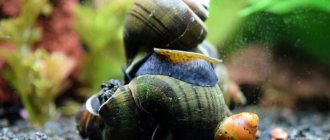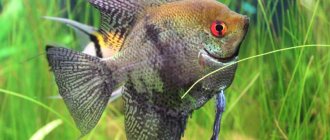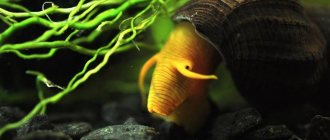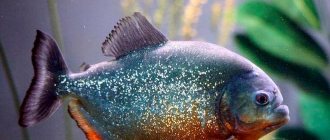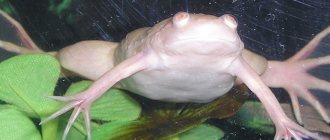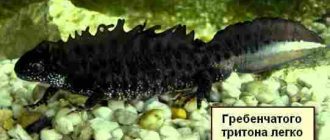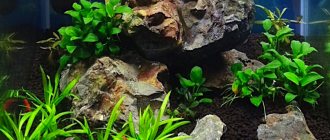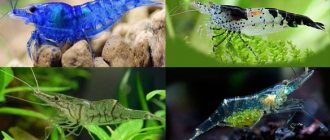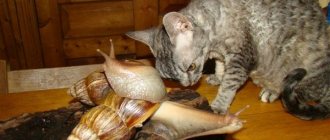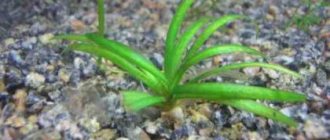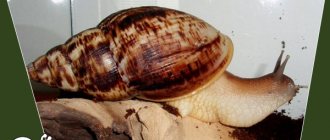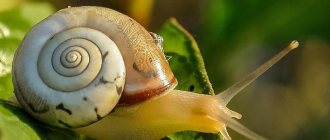Achatina snails are indigenous to the warm and humid regions of Africa. Their description has been known since the 19th century; thanks to man, they quickly populated the islands of the Indian Ocean, ending up in India, Sri Lanka and Mauritius. There are more than 60 species of Achatina in nature. Large size, beauty, interesting behavior, long life in captivity (from 5 to 10 years) have made some types of Achatina snails popular pets. Nowadays, more than eight species of these unique land mollusks are kept at home.
Maintenance and care at home
Snails are recognizable mainly because of their slowness. They are considered plant pests in the garden. Invasive snails also appear in aquariums and are a big problem (they need to be controlled in various ways). However, most species (from tropical areas) play an important role as "scavengers". Some of them are predators and dangerous to fry or other small creatures (such as shrimp).
Almost all snails have very poor tolerance to water that is too soft and acidic (then they lack the minerals needed to build shells).
In order for a mollusk to build a strong shell, the water in the aquarium must be hard and saturated with calcium.
But snails are also hardy, adapting to any conditions, including temperatures from +18-28°C. It is better not to take them from reservoirs into your aquarium, but to buy them at a pet store. They live better in warm water and reproduce more actively. But too much birth rate is also bad.
An important point for aquarium snails is the soil. Streets prefer coarse or fine sand, but soil 1-2 mm in size is also suitable.
Some species are escapees. For example, for large apple snails, the aquarium should be tightly closed, and 2 cm of space should be left between the surface of the water and the lid for free breathing and for laying eggs.
Representatives of the genus Tylomelania are more demanding (they need crystal clear, oxygenated water with a fairly high temperature). Caring for them can be recommended to more experienced aquarium lovers.
For comfortable living, the volume of the aquarium is the same as for aquarium fish: 1 aquarium snail needs 10 liters.
Helix pomatia
Also known as the Roman snail or burgundy snail, this common garden snail is widespread in Europe. This type of garden snail can reach approximately 4 cm in height and vary in brown tones. Helix pomatia is a herbivore and feeds on pieces of fruit, leaves, sap and flowers. This garden snail is nocturnal and is a snail or popular edible snail .
Table of basic parameters of maintenance, care and nutrition:
| What should be the volume of the aquarium? | for most types from 10 liters for some types from 90 liters |
| What should the temperature be? | from +18-30° C depends on the type |
| What pH should it be | from 6.5-8 pH |
| What should be the stiffness? | from 8-18° dH |
| What should the substrate be? | coarse or fine sand, fine grains of substrate (soil) 1-2 mm in size |
| What kind of lighting should there be? | moderate |
| What should be the movement of water | moderate |
| Maximum size | from 1.5-9 cm, depends on the type |
| What does it eat? | aquarium algae: healthy or rotting; fish food; raw or boiled vegetables |
| Type of aquarium snail | depends on the type: peaceful; predators |
| Who is compatible with in an aquarium? | compatible with all peaceful aquarium inhabitants |
| Lifespan | from 1-5 years depending on the type and conditions of detention |
Vulgate patella
Known as the Common Snail , this type of sea snail is endemic to the waters of Western Europe. This sea snail is usually attached to rocky shores or shallow water. Limpat is one of the snail species most consumed by humans...
What to feed aquarium snails
Aquarium snails do not feed on healthy plants (except invasive species). Therefore, the opinion that they destroy the structure of the aquarium is erroneous. Clams feed on detritus - decaying organic matter (for example, excess food or rotting pieces of greenery). For some members of the family, algae are the main food.
In the absence of food (such situations rarely occur in aquariums), they feed on fish food. They can also be fed raw vegetables, which need to be poured with boiling water for 5-10 minutes - carrots, cabbage, beans. You can also feed them with specialized food.
Large ampularia readily eat fish products in tablets, raw cucumber slices, frozen spinach, steamed or frozen lettuce, and even frozen plankton.
Littorina Littorea
Also known as the common periwinkle , Littorina littorea is a mollusk that can be found in abundance in the Atlantic Ocean, especially around the areas surrounding North America and Western Europe. Winkle snails are characterized by a smooth, dark, spiral shell. These sea snails usually live on rocks or under boats.
Aquarium snails: species with photos, names and descriptions
There are many types of aquarium snails. All the most common types of aquarium snails are described here:
Ampularia
Ampularia is the most famous species of exotic snail, native to South America. The shell reaches 10-12 cm. There are many color options. The most common are yellow, brown, white or mixed. The apple snail has no ears, it is completely deaf, has poor vision, and recognizes only light and dark places.
The temperature in the aquarium should be from +20-25° C. Hardness from 8-18° dH. Acidity from 6.5-7.8 pH. Aquarium volume from 10 liters.
These are bisexual mollusks and require a pair to reproduce. Males and females are difficult to distinguish externally. It does not reproduce as intensively as other small snails. Therefore, you need to create conditions: raise the temperature a little and increase the amount of food. Only at this temperature does it become active. After successful copulation, eggs are laid in the form of cocoons above the water (in an aquarium on glass or on a lid).
In good conditions they can live from 3-5 years. The combination of lungs and gills in the respiratory system reflects their adaptation to life in oxygen-deficient waters.
Melania
The Melania snail is a freshwater species that originally originated in Southeast Asia and is now widespread throughout almost the entire world in subtropical, tropical and temperate climate zones.
Size up to 3 cm. It has a twisted elongated cone-shaped shell with up to 12 turns. More often found in brown or olive tones with marbled highlights.
A very useful aquarium creature, cleaning the bottom in search of food and protecting them from anaerobic zones. During the day it usually remains in hiding, only after turning off the light does it appear on the glass of the aquarium.
It feeds on food debris left by fish, fish droppings and detritus. They have a high oxygen requirement and are useful, but over time they can become a pest in the aquarium. This species is viviparous and reproduces very quickly.
The temperature in the aquarium is from +22-28° C. Life expectancy is up to 2-3 years.
Coil
The aquarium snail Coil is one of the popular aquarium snails with a brown, grayish, dark blue, almost black and sometimes even red shell. The color is affected by the presence of hemoglobin because these snails, like humans, have red blood. Is a hermaphrodite. It multiplies too quickly.
There are several types of coils:
- Horn Coil;
- Coil Wrapped;
- Far Eastern coil;
- Keeled coil;
- Reel Horny Red.
The temperature in the aquarium is from +22-28° C. Life expectancy in the wild is up to 4 years in the aquarium up to 2-3 years.
Decoration: long antennae that look like horns. The shell is completely round, its diameter reaches about 1.5 cm. The mollusk is easy to grow. It eats food left by fish, fish droppings, detritus, algae, dead plant debris and periphyton.
Fiza
The Physa snail is a small species of snail. It has an oval shiny shell, inflated at the entrance, with a curl of 3-4 turns. Grows up to 1.5-2 cm in length. The shell is light brown. These snails feed on algae and leftover food from aquarium fish. They are voracious and secrete a lot of mucus.
There are several types of physical:
- pointed;
- vesicular;
- red;
- marmorata.
Temperature from +20-30° C. Life expectancy from 1.5-2 years.
They reproduce quickly, constructing “egg bridges” containing about 100 eggs. Due to their high fertility, the population of these creatures in the aquarium must be controlled. But they are also readily eaten by aquarium fish (for example, Ancistrus and Cichlids).
Neretina
There are more than 20 varieties of Neretin snails, which differ in appearance and colors: olive, brown-black with golden stripes. Also, all species grow up to 2 cm in size, except for the tiger and zebra, which grow up to 3-3.5 cm. The Neretina snail is freshwater, but some representatives live in salt and brackish waters.
They feed on plaque in the aquarium on the glass of the aquarium; they perfectly clean the aquarium of algae deposits. Plants are not damaged. You also need to feed cereal flakes and an algae called spirulina. They are active day and night, sometimes taking rest breaks. In case of “escape”, this snail will not be able to go without water for long - it will die.
“Escape” can happen due to:
- bad water in the aquarium;
- small amount of oxygen;
- too little food.
There will be no issues with overpopulation, because Neretina larvae need brackish water for development.
The lifespan of neretina is from 1-2 years, but there are varieties of neretina that live up to 5 years. Temperature from +24-30° C. Acidity from 6.5-8 pH. Hardness from 6-20° dH.
Helena
The Helena snail lives in rivers and lakes of Indonesia, Thailand, and Southeast Asia. This beautifully colored snail with a cone-shaped shell resembles a regular auger, but its coloring is more regular. Light yellow and dark brown stripes with strong pigmentation are arranged alternately and contrast effectively with each other. Each turn is ribbed with decorative inserts.
They grow to about 2 cm in length. These are predators that eat their relatives, equipped with a tube with which they “suck out” the body of the victim. The recommended temperature is +23-27° C, but it reproduces more often at temperatures above +25° C. At a temperature of +20° C, the Helena snail stops reproducing. Water hardness should be from 8-15 dH. Acidity from 7-8 pH.
Tylomelania
All species of tilomelania snails originate from the Indonesian island of Sulawesi. The diversity of species among tylomelanas is directly determined by their natural habitat - mainly the soil in which they live and the type of water from which they originate (still or flowing).
It reaches a length of up to 12 cm, the shell is cone-shaped and durable. The eyes, like two beads, are located on “legs”. Bisexual animals, fertilization is internal.
The male, equipped with a copulatory organ, fertilizes the female, and the sperm is deposited in the seminal reservoir (it can be stored there for a long time and used if necessary). After fertilization, the female releases the embryos (their number and size depend on the specific species) sequentially into a special chamber.
Tilomelania reproduce continuously, with females constantly releasing the next largest embryos, so these snails reproduce quite quickly. They feed on diatoms and detritus.
The Tilomelania snail has a good appetite. Feeds:
- zucchini;
- spirulina;
- green vegetables (cabbage, cucumber);
- shrimp food;
- live food;
- fish meat.
The temperature in the aquarium is from +27-30° C. The acidity of the water is from 8.3-8.6 pH. Life span is 5-7 years.
Horned
The horned snail lives in rivers, streams, canals, estuaries and deltas of New Guinea, the Philippines, Indonesia, Japan and Taiwan. This is a freshwater species.
There are a large number of varieties of horned snails, so they are found in different color shades. It is characterized by protruding spines (or horns) that act as a defense mechanism against natural predators. The spikes are randomly distributed and can also damage human skin.
This is a calm snail that does not bother other inhabitants of the aquarium (fish and shrimp). Size depending on type from 1-3.5 cm.
Active, but moves slowly, likes to escape from the aquarium and crawl on land. Eggs are laid when the environment in which they live is full of food. It feeds on aquarium algae: healthy or rotting, fish food, raw or boiled vegetables.
Water temperature is not lower than +24° C. Hardness is from 10-13° dH. Acidity from 7 pH. Life span is from 1-5 years.
Theodoxus
The Theodoxus snail is from the Neritid family; its maximum size is 2 cm. The homeland of these snails is Poland, the Baltic states, Ukraine, southern Russia, Belarus, some areas of Hungary and several species can be found in the Azov, Black and Baltic seas.
In essence, it is an assistant in the aquarium. She eats aquarium plants, thereby “trimming” them, and also constantly cleans the walls of the aquarium, decorations, and aquarium plants from plaque and does it better than catfish or shrimp.
To keep 1 individual, you need an aquarium of 1 liter in size, but due to its small size, it is better to keep at least 10 individuals (1 individual in the aquarium will be invisible). And for reproduction you need at least 10 individuals.
Water temperature from +20-30° C. Acidity from 5.5-7 pH. Hardness from 10-20° dH.
Marisa
The snail Mariza loves to “travel”, so you need to cover the aquarium so that Mariza “runs away”. Marisa breathes atmospheric air, so you need to cover the aquarium so that there is a small gap left.
The size of the shell reaches up to 6 cm. The color of the shell is:
- grey;
- light brown with black spiral stripe.
This snail is ideal for an aquarium with a lot of vegetation that needs to be trimmed frequently. The main diet is healthy aquarium vegetation, which can be eaten down to the root.
Maryse snails can live in salt water, but they will not reproduce in such water. For Mariza snails, temperatures from +21-25° C, water acidity from 7-8 pH, hardness from 8-15° dH are suitable. With proper maintenance, it lives up to 4 years.
A female and a male are required to reproduce. The eggs are laid on any surface convenient for the female.
Black mystery
Native to Brazil, there are 120 species. This snail breathes using a process (siphon). She can push this process out of the water and swallow air.
It reaches up to 5 cm in diameter and is most often black in color. The female is larger than the male. Peaceful, low maintenance, omnivorous. Eats algae deposits on the walls of the aquarium and the remains of fish food.
Temperature from +20-30° C. Acidity from 6.5-8 pH. Hardness from 12-18° dH. Lives from 3 to 5 years.
Bitinia
At its core, the Bitinia snail is an aquarium cleaner. It penetrates into hard-to-reach places in the aquarium, thereby thoroughly cleaning the aquarium from bacteria and fungi.
The shell of Bitinia is strong, but only if there is calcium in the water. There are several shell colors: dark brown or light brown.
Reproduction requires a female and a male. The female lays her eggs on any surface in the aquarium that she likes.
There are several types of Bithinia snails:
- Bitinia tentacleta;
- Bitinia Licha;
- Bitinia Bloated.
Depending on the species, the size of an adult can be from 1.5-12 cm. Temperature is from +22° C. They live from 1.5-5 years, also depending on the species.
The Bithinia snail can be a helper, but it can also be a pest - it is a carrier of parasitic worms, for example, double-barreled worms.
Devil's thorn
The aquarium snail Devil's Thorn is a fairly large mollusk, its shell width reaches 2 cm and its length is 8 cm. The Devil's Thorn has several species. The main shell colors are brown, light brown and black. Body color may be orange, marbled or yellow.
Habitat in nature: Southeast Asia. This snail is also found in muddy rivers that border the sea coast. It lives in North and South America, Madagascar and southern Africa.
It feeds on plaque in the aquarium, fish food, and raw or boiled vegetables.
Temperature from +25-28° C. Acidity from 7-8.7 pH. Hardness from 5-20° dH. The water should be salty: 1 tbsp. spoon of sea salt per 3 liters of water.
If all requirements are met, the lifespan is up to 5 years.
Luzhanka
The Luzhanka snail is one of the few viviparous snails that gives birth to already formed young. The shell color can be yellow or dark yellow with a light brown or brown spiral. There is a lid on the “leg” of the lawn and when it hides the body in the sink, it closes with this lid “closing the door behind itself.”
The Luzhanka snail is demanding of cleanliness in the aquarium, essentially due to the fact that it breathes oxygen, which dissolves in water. He also likes to dig in the ground, so the soil should be coarse or fine sand, or soil with a granule size of 1-2 mm. Digging in the ground, she gets her food. Therefore, the question regarding what to feed is not worth it, but feeding with calcium-containing feed will be useful.
Temperature from +24° C. The size of an adult reaches from 2-4.5 cm - depends on the species.
There are several types of Luzhanka snail:
- Striped Swamp Lawn;
- A real river Luzhanka.
Life expectancy is 8-10 years.
Spixie
Spixie snail shell color is white with a dark brown spiral or yellow with a dark brown spiral. The body may be brown or yellow with a few dark spots. The size of the female does not exceed 3 cm, the male up to 2 cm.
The Spixie snail hides in the ground during the daytime, and stays awake when darkness falls (if there is no soil in the aquarium, then the difference between night and day is no longer important).
For example, Ampulyaria, due to its weight, cannot maintain itself in a suspended state for a long time, but Spixie is able to maintain its weight at any height.
Eggs are laid on any surface in the aquarium.
Temperature from +22-28° C. Acidity from 6-8 pH. Hardness from 8-10° dH. Lifespan in an aquarium is up to 5 years.
River Dreissena
The Dreissena polymorpha snail is a bivalve mollusk that can live in brackish and fresh waters. The shell is triangle-shaped and up to 5 cm long. The color of the shell is:
- light yellowish with brown stripes;
- white with brown stripes;
- greenish with brown stripes.
This snail has gills through which it breathes and feeds.
The rule of 10 liters per 1 snail does not apply to this snail! You need an aquarium of at least 90 liters with a temperature of +18-27° C. Lives from 5-8 years.
Tiara
The Tiara snail is scary-looking and has thin needles on its shell that look like weapons. But this is only in appearance; these needles are flexible and delicate hairs that do not pose any danger. The size of this snail does not exceed 3 cm in length.
Feeds:
- aquarium plants;
- live food;
- spirulina;
- granules;
- nori (pressed seaweed);
- pieces of vegetables.
The color of the shell can be: dark yellow, brown or cream. Often limescale deposits form in the grooves of the shell.
Thiara cancellata's natural habitat is the islands of the Pacific and Indian Oceans. Also on the island of Bohol in the Philippines in brackish and fresh water with tides.
Temperature from +22-26° C. Acidity from 7.2-8.2 pH.
Zebra
The Zebra snail is also called Neretina. There are several varieties of the Zebra snail. She is unpretentious and adapts to any conditions. At its core, an aquarium assistant cleans everything in the aquarium.
The size of the Zebra snail reaches up to 2 cm. This snail has a light and dark yellow color and a black or dark brown spiral.
An aquarium of 10 liters or more is suitable for its maintenance. Does not harm aquarium plants and other aquarium inhabitants. Temperature from +22-26° C. Acidity from 7.2-8.2 pH. For reproduction, salt or salt water is needed. They live up to 3 years.
Pharaonic clanculus
The second name of the specimen is strawberry snail, and if you carefully examine the photo, it will be clear why it was obtained. Individuals really resemble ripe strawberries in their appearance.
Most often they live in the waters of the Red and Arabian Seas, the Indian Ocean and the Gulf of Aden. Individuals prefer shallow depths - up to 5 meters.
The colorful shell of the strawberry snail is decorated with spirals on a grainy background and measures 2 to 3 cm in size. Not only the shell is colored. The body of the snail is cream-colored, it has crimson spots, the tentacles and head of the individual are green.
nashzelenyimir.ru
A special feature of the specimen is its active lifestyle, which is more atypical for slow snails. This specimen is in motion both day and night. Mollusks gather in large schools in winter when they are preparing for spawning.
Previously, we met the amazing killer cone snail.
Aquarium snails breeding
There are many aquarium snails that breathe through gills and reproduce sexually and asexually, lay eggs or are viviparous.
Some species are bisexual (hermaphrodites), that is, one individual is enough to bear offspring. Unfortunately, this is often the case for species that are considered invasive. Among the domestic hermaphrodite species: coil (Planorbarius corneus) and physa (Physa). Species that require a male and a female for reproduction: ampularia, helena, gimlet, tilomelania, marise.
Reproduction methods vary from person to person. Snails can lay eggs in water (for example, attaching them to rocks, plants) or above the surface of a water surface (for example, on glass and lids). Then you can unwittingly destroy the cubs by adding water. Snails can also develop offspring in their own body (augers). Sometimes reproduction is very difficult (or impossible), since the larvae, after hatching from the eggs, require salt water and sea plankton (Vittina Semiconica, Zebra Nerites).
The owner of the aquarium has a certain influence on environmental factors for reproduction - maintaining optimal water temperature, creating shelter and potential places for laying eggs, and also providing enough food.
In aquariums for snails, the presence of predators (gourami fish, pufira fish, Leporinus group) should be avoided. Young snails may be at risk for several months because their shells are not yet fully hardened.
Haliotis Geigeri
Most often referred to as abalone , these marine molluscs belong to the Haliotidae family and are highly prized in the culinary world. Abalones can be found in the waters surrounding Yugãili Tomé and Príncipe, off the coast of Gabon, Africa. This sea snail is characterized by its oval, spiral shell and sticks to rocks where it feeds on plankton and algae.
Diseases
Most often, diseases arise due to improper maintenance. If you do not feed the snail with calcium, the shell will begin to deteriorate. And you can also add eggshells, shells or chalk (all crushed) to the water. The cuttlefish skeleton (there are a lot of proteins there) can be lowered into the aquarium, the snails will gradually scrape it off.
If there are indentations on the sink, these are most likely mites. You should carefully remove the pet from the water, blot the shell with a soft cloth, then wipe it with a cotton swab soaked in formaldehyde. Protect the animal from getting this liquid on its body.
A white coating on the shell indicates the presence of other parasites. Then you need to place the snail in a salt solution (10 g per 1 liter of water), hold for 15 minutes.
Due to lack of oxygen, the animal may fall into a coma and because of this, the snail may not crawl out of its shell. The clam should be transplanted into a jar of clean water.
Sometimes diseases include green plaque on the sink. But this is not so, you just need to clean the shell with a soft toothbrush (without soap or other products).
Conclusion
Some species help keep the aquarium clean by reaching where human hands and tweezers cannot reach. These mollusks are part of different environments and provide food for many organisms, so they should be considered a necessary and important part of any aquatic ecosystem.
Habitat
Snails can be found almost anywhere on the planet with the exception of arid deserts and Antarctica. They live not only in the warm Pacific and Mediterranean environments, but also in the cold waters of the Barents Sea and the Arctic Ocean.
Gastropods are also comfortable in Australia, Africa, America, Europe, Russia and Asia. A necessary criterion for the existence of snails is a high level of humidity, otherwise the animal faces death from drying out.
Achatina fulica
The giant African snail (Achatina fulica) is a species of snail native to the coasts of Tanzania and Kenya, but can also be found in various tropical areas around the world.
This large snail is between 10 and 30 centimeters long and has a spiral shell with brown and yellow stripes. The giant African snail is nocturnal and feeds mainly on: plants, bones, algae, carrion, lichens and even stones, which it consumes for calcium.
Key Security Points
There are several important safety considerations to keep in mind when preparing and eating snails:
- If you find a snail in the wild, you can wait about three or four days before eating it. There is a possibility that the snail has consumed several dangerous pesticides and other compounds outside your home. After a few days, all traces of what the snail has eaten should be removed naturally. The snail's intestines should have eliminated the toxins from the body after a few days without them...
- You should cook any snail you find completely to kill any potentially dangerous bacteria it may contain.
- Avoid consuming snails with their shells. In addition to being a choking hazard, some deposits can be difficult to clean. This especially applies to those who have many pores and cracks...
- While you can add salt or other spices over your snails after you've finished cooking them, you should avoid doing so before cooking them. Anything you add to snails before cooking can weaken them and break their bodies.
What makes them delicious?
The idea of eating snails may not seem so appealing to most. However, it can make a real difference to your camping and survival needs if done well enough. There are many reasons why snails are so good. Either way, they can give you the energy you need while on a hiking or hiking trail. To get the best survival skills in nature, you must have them in nature, see our previous article on this topic.
- Snails light in calories . Approximately 100 grams or 3.5 ounces of snails contain about 90 calories.
- Most of the calories in snails come from squirrels . In particular, about 100 grams of snails contain 16 grams of protein. This provides enough energy for your camps or hiking excursions during the day...
- Snails contain approximately 2 grams of carbohydrates per serving. This ensures that you can use the protein for energy without feeling tired from too many carbohydrates...
- You don't have to worry about consuming too much oil . One serving contains an average of 1.5 grams of fat. There is also slightly more unsaturated fat than saturated fat.
- There are only about 50 grams of cholesterol in a 100 gram serving.
- Approximately 3.5 mg of iron is included per serving. It's better than what you'll get from beef.
Aspers spiral
More commonly known as the garden snail , Helix aspersa, it can be found throughout the world, including North and South America, Oceania, Europe, South Africa and parts of the British Isles. This herbivorous snail is usually found between gardens and crops. Because the garden snail often attacks and feeds on crops, it is considered a nuisance to humans and therefore pesticides kill it.
Bitinella Butleri
Bitinella butleri is a partly freshwater snail that inhabits the fresh waters of Spain, where it has been recorded in 63 different locations. This type of snail is classified as a less disturbing snail species, as many of its habitats have dried out as a result of pollution and exploitation.
Giant squid / Architeuthis dux
Let's complete the description with the largest mollusk in the world from the genus Architeuthis. It is also the largest invertebrate animal on the planet.
The huge squid was first caught in 1880 off the coast of New Zealand, although ship logs contain entries from 1555, when sailors first saw the “sea monster.” In 2007, Japanese scientists were able to photograph it; before that, it was only occasionally seen from the decks of ships.
The squid caught in New Zealand waters was 18 m long, but adults of this species usually grow 8–9 m long.
Did you know that: Squid is useful for men who want to increase testosterone levels in the blood in a natural way. Read about this and other ways to increase testosterone in our article.
